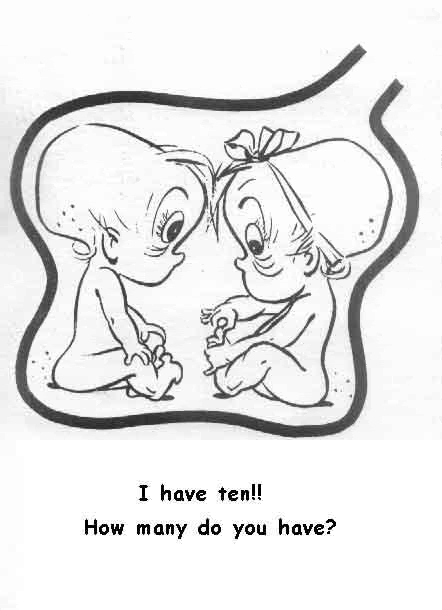Vanishing twin syndrome

When you first discovered you were pregnant, your sonogram showed two or more fetuses. You got all excited, and immediately started gearing up for more than you planned. But a month later, the sonogram confirmed that you have just one baby, growing hale and hearty. What happened? This is called the vanishing twin syndrome. For one reason or another, the second fetus was not viable and the one which was healthy prevailed. It was as if the twin fetus just vanished.
The first thing to remind yourself is that this is not really unusual. A generation ago women did not have sonograms, and the only evidence might be found in the placenta after birth, if there is any at all. Most women didn’t even know it occurred. The prevalence of good prenatal care and early sonograms has made us more aware of the phenomenon. It was actually first recognized in 1945 by Stoeckel, and refers to the disappearance of one or more fetuses in a multiple pregnancy.
When this occurs in the first trimester, the most common time for the syndrome to be discovered, there is more than likely a developmental problem with the twin that vanishes; this is the time of organ development, and as with miscarriages, if the body detects chromosomal or development problems, the body ‘ejects’ the ailing fetus. If there is another baby (the ‘twin’), then because of the continued presence of the nourishing placenta, the sick fetus is reabsorbed into the placenta, and any evidence of the fetus is hard to find. The mother may experience mild cramps, pelvic pain or spotted bleeding, but usually there are no physical symptoms at all. If the symptoms do appear another sonogram should be performed to ensure that everything is alright. The viable fetus grows into a healthy baby. It is nature’s way of making sure the healthy survive.
Experts studying the vanishing twin syndrome estimate that one-eighth of pregnancies begin as twins. Obviously, the number of twins that make it to maturity is much smaller. Dr. Carolyn Givens (Pacific Fertility Center) estimates that fifteen to twenty percent of twin pregnancies miscarry one fetus. In 1986, a sonogram study was conducted on 1,000 pregnancies; exactly 21.9 percent of the twin pregnancies resulted in the vanishing twin syndrome.
When it comes to the first trimester, the cause is not solidly known. It is considered usually chromosomal or developmental damage, or could be improper cord implantation. It seems to occur with the same frequency between identical and fraternal twins, but it is suggested that the sharing of the placenta between identical twins may contribute to the odds. There is no preventative measure which could be taken.

Older mothers (over the age of 30) do tend to have this experience more often; the twins are usually fraternal, since older mothers tend to release more than one egg; and older mothers more often have chromosomal abnormalities, causing a higher rate of miscarriages.
Sometimes the only sign that the vanishing twin syndrome has occurred is that approximately seven percent of these women deliver the healthy baby before the 28 week gestation period, as compared to one percent of singleton mothers. About one third of these surviving twins will be underweight, with the incumbent complications.
With the advent of in vitro pregnancies comes the increased chance of multiple pregnancies. Since these pregnancies are closely monitored, it has been documented that they often experience the vanishing twin syndrome.
While first-trimester losses of twin fetuses are rather common and have few if any effects, the story changes if the twin vanishes in the second or third trimester. There is an increased risk of death for the surviving twin. The pregnancy is considered high-risk at this stage. It is more likely that the ‘vanishing’ twin will not be completely absorbed or ejected, leaving a ‘flattened’ fetal remnant or tumor material.
Late-term vanishing twins can also result in cutis aplasia or cerebral palsy in the surviving twin. The mother may experience preterm labor, obstruction of labor, infection, consumptive coagulopathy, or puerperal hemorrhage. There are instances of small tumors with remnants of the vanished twin which may occur in the survivor.
Therefore, if after your first trimester it is confirmed that you are carrying a multiple pregnancy, it is important to get regular sonograms and have the pregnancy monitored closely to avoid any problems.
No matter when the syndrome occurs, there may be a feeling of loss, not only for the parents, but also within the surviving baby. There can also be feelings of relief or guilt that the survivor is healthy. These feelings should be addressed, and if necessary worked through with a counselor before they affect relationships.
© 2015 Bonnie-Jean Rohner







